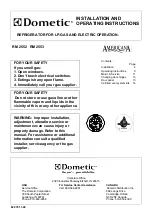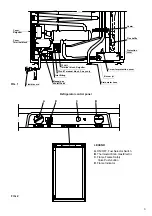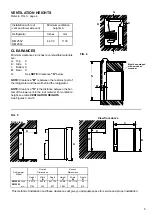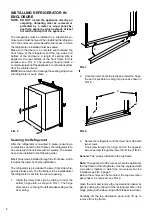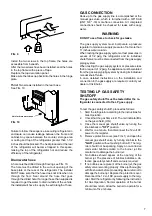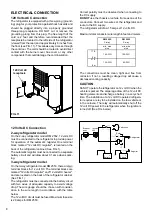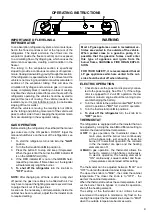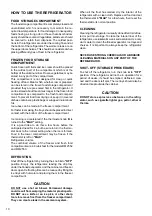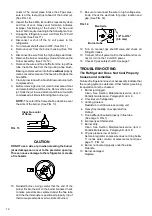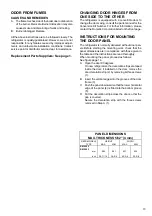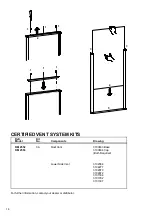
column. The correct place to take the LP gas pres-
sure is at the test port just ahead of the burner jet.
(See FIG. 12).
D.
Inspect the flue baffle. It should be reasonably clean
and free of soot. Heavy soot formation indicates
improper functioning of the burner. The flue and
burner both require cleaning in the following manner:
1.
Unplug the refrigerator power cord from the 120 volt
AC outlet. (See FIG. 11).
2.
Disconnect or shut off the 12 volt power to the
refrigerator.
3.
Turn manual shutoff valve to OFF. (See FIG. 1).
4.
Remove cover from the burner housing. (See FIG.
1).
5.
Disconnect the wire from the high voltage electrode.
6.
Remove the burner mounting screw and remove the
burner assembly. (See FIG. 12).
7.
Remove the wire and flue baffle from the top of flue
tube. Clean the flue from the top using a flue brush.
Blowing compressed air into the flue will not properly
clean soot and scale out of the flue tube. Replace the
flue baffle.
8.
Clean burner tube with a brush. Blow out burner with
compressed air.
9.
Before removing burner jet, clean burner area of soot
and scale that fell out of flue tube. Remove the burner
jet. Soak the jet in wood alcohol and blow it out with
compressed air. Reinstall and tighten burner jet.
NOTE: The color of the flame shall be clear blue over
the slots of the burner. (See FIG. 13).
CAUTION
DO NOT use a wire or pin when cleaning the burner
jet as damage can occur to the precision opening.
This can cause damage to the refrigerator or create
a fire hazard.
10. Reinstall burner, being careful that the end of the
burner fits into the slot on the burner bracket. Check
to make sure slots are centered under the flue tube
and the thermocouple is positioned properly (tip of
thermocouple extends over two slots of burner).
11. Be sure to reconnect the wire to high voltage elec-
trode. Check the electrode for proper location and
gap. (See FIG. 14).
12. Turn on manual gas shutoff valve and check all
fittings for leaks.
13. Connect 120 volt power cord to the outlet and recon-
nect or turn on the 12 volt DC power.
14. Check LP gas safety shutoff. See page 7.
TROUBLESHOOTING
The Refrigerator Does Not Cool Properly
Causes and remedies
Failure of refrigeration does not necessarily indicate that
the cooling system is defective. Other factors governing
its operation must be checked.
1. Burner jet clogged.
Clean. See Section Maintenance/service, item 3.
Periodic maintenance, Paragraph D. item 9.
2. Check level of refrigerator.
3. Venting problem.
Restriction in air flow across cooling unit.
4. Heavy frost buildup on evaporator fins.
Defrost.
5 Flue baffle not inserted properly in flue tube.
(See page 3, FIG. 1).
6. Improperly set thermostat.
7. Burner dirty.
Clean. See Section Maintenance/service, item 3.
Periodic Maintenance, Paragraph D. item 8.
8. LP gas pressure low at burner.
Set main regulator so pressure does not drop below
11 inches water column at pressure test port (see
page 11, FIG. 12).
9. Burner not located properly under flue tube.
Relocate.
10. Burner damaged.
Replace.
FIG. 13
Clear blue color
of flame
FIG. 14
Electrode
1/8" to 3/16"
(3-5 mm)
Burner tube
12

